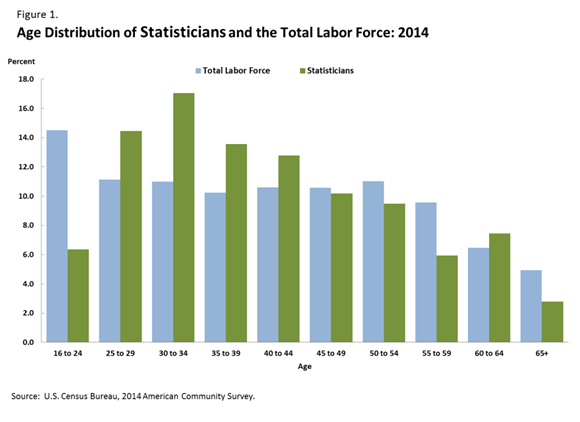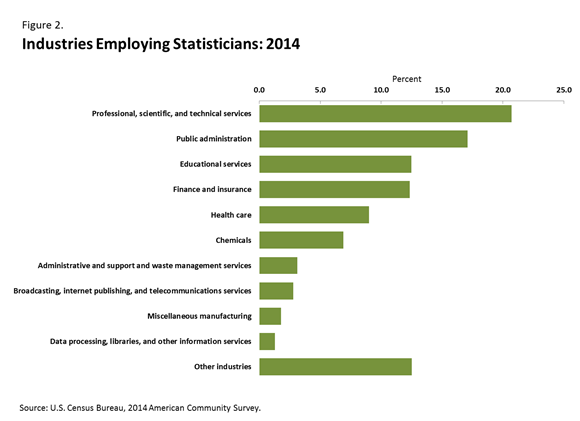
An official website of the United States government
Here’s how you know
Official websites use .gov
A .gov website belongs to an official government organization in the United States.
Secure .gov websites use HTTPS
A lock (
) or https:// means you’ve safely connected to the .gov website. Share sensitive information only on official, secure websites.
-
//
- Census.gov /
- Newsroom /
- Census Blogs /
- Random Samplings /
- Statisticians: A Goodness of Fit Test
Statisticians: A Goodness of Fit Test
Statisticians: A Goodness of Fit Test
In honor of World Statistics Day, let’s talk about statisticians. While lots of people use statistics in their jobs every day (such as sports writers, stock analysts, weather reporters, biologists, engineers, economists, sociologists, epidemiologists, practicing physicians, nuclear physicists and lots more), only 45,145 or so (standard deviation 2,150) describe themselves as “statisticians” on the American Community Survey.
Who are these number crunchers? It seems like we should look at some numbers.
Statisticians are equally likely to be male or female. Their mean age is statistically indistinguishable from the labor force (40.8 years and a sizeable margin of error, compared with 41.4 years). Yet that mean is misleading, as they so often can be. Referring to the attached histogram, the reader will discover statisticians are concentrated far more heavily in their late 20s and early 30s than the general labor force population (Figure 1).
As part of the science, technology, engineering and math (STEM) workforce, statisticians have high educational attainment — 93.0 percent have a bachelor’s degree or more (59.5 percent have an advanced degree) among 25- to 64-year-olds compared with 35.1 percent of the comparable total labor force. They have correspondingly high earnings (median earnings of full-time, year-round statisticians of $83,461 compared with $43,545 for the comparable total working population). Statisticians also have a high probability of employment, with an employment-to-population ratio of 92.5 in 2014, compared with 68.0 for the working-age population.
And what use do they find for their statistics? Well, about one quarter of them work in government (and not all at the Census Bureau!), plus all sorts of industries employ them. All told, about nine in 10 statisticians work in 10 major industries (Figure 2).
Share
 Yes
Yes
 No
NoComments or suggestions?


Top


